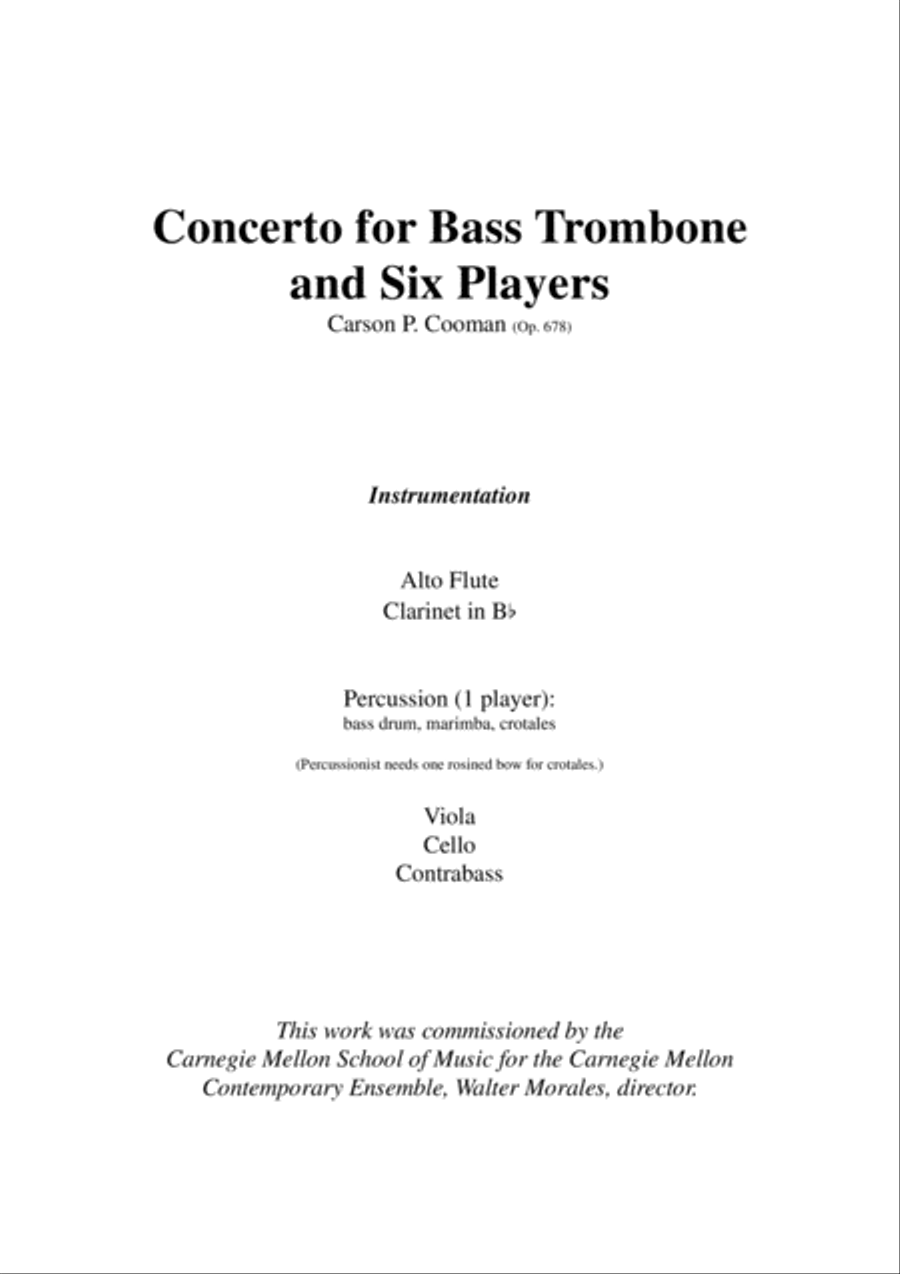Large Ensemble Cello,Clarinet,Double Bass,Flute,Multi-Percussion,Trombone,Viola - Level 5 - Digital Download SKU: A0.533688 Composed by Musik Fabrik Music Publishing. Concert,Contemporary,Standards. Score and parts. 26 pages. Musik Fabrik Music Publishing #3038603. Published by Musik Fabrik Music Publishing (A0.533688). Concerto for Bass Trombone and Six Players (2006) was commissioned by the CarnegieMellon School of Music for the Carnegie Mellon Contemporary Ensemble, Walter Morales,director. The work is dedicated to trombonist Jim Siders, for whom the solo part was written.The work is scored for solo bass trombone with an ensemble of primarily âdarkâ instrumentsâ alto flute, clarinet, viola, cello, contrabass, and percussion. The solo bass trombone is thefocal point of the musical discourse, acting throughout largely as a protagonist â with muchmaterial best described as bitterly lyrical. The work maintains a generally dark, obsessive,and bitter tone throughout.Unlike some concerti, however, the work is not about an aggression between soloist and therest of the ensemble. Rather the bass trombone is âfirstâ among a collection of like mindedindividuals â all expressing the same sentiments and aggressions.The opening section is marked âspasmodic.â Quiet nervous twitches serve as a backdrop to amelodic unfolding of the basic material and interval content. The end of this part âbreaksapartâ to reveal a section marked âslow, otherworldly.â The harmonic material starts modal,open, and âdistantâ in feeling (perhaps a recollection of a distant past) before becominggradually gnarled again.The trombone leads towards the next section: an ever-building athletic âmoto perpetuo.â Thisreaches its peak in an aggressive and horribly angry climax â with a wide-ranging trombonepart marked âwildly raving; insane, uglyâ, obliterated by bass drum hits and shriekinghammer blows from the other instruments.A nervous and timid interlude returns to the nervous twitching of the opening â thougheverything is slightly slower and more hushed than before, finally breaking off into anenigmatic coda.Alto FluteClarinet in BbPercussion (1 player):bass drum, marimba, crotales(Percussionist needs one rosined bow for crotales.)ViolaCelloContrabassThis is the score only. The score and parts are sold as another item
